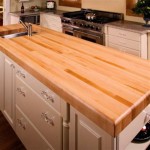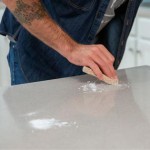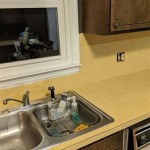How To Laminate A Countertop
Laminate countertops offer an affordable and durable surface for kitchens and bathrooms. Successfully laminating a countertop involves careful preparation, precise measurements, and the right application techniques. This guide outlines the process for achieving a professional-looking finish.
1. Gather Tools and Materials
Before beginning, ensure all necessary tools and materials are readily available. This includes the laminate sheet, contact cement, a router with a laminate trimming bit, a file or sanding block, a utility knife, a straight edge, measuring tape, safety glasses, and hearing protection.
Choosing the right contact cement is crucial. Water-based contact cement offers lower VOCs and easier cleanup, while solvent-based versions provide a stronger bond but require more ventilation. Select a high-quality laminate sheet in the desired pattern and finish. Consider post-formed laminate for rounded edges, which simplifies the finishing process.
2. Prepare the Countertop Surface
Proper surface preparation is essential for successful laminate adhesion. Begin by thoroughly cleaning the countertop surface to remove any grease, dirt, or debris. For existing laminate countertops, lightly sand the surface to create a better bonding surface. If working with particleboard or MDF, ensure the edges are smooth and even.
Fill any chips or imperfections with wood filler and allow it to dry completely. Sand the filled areas smooth and level with the surrounding surface. A clean and even surface will ensure the laminate adheres properly and creates a smooth, professional finish.
3. Measure and Cut the Laminate
Accurate measurements are critical to avoid wasted material and ensure a proper fit. Measure the countertop surface precisely, adding a few inches overhang on all sides to allow for trimming. Transfer these measurements to the back of the laminate sheet using a pencil and a straight edge.
Using a utility knife and a straight edge, score the laminate sheet along the marked lines multiple times. Apply firm pressure to ensure the cut penetrates most of the way through the laminate. Carefully snap the laminate along the scored lines, ensuring a clean break.
4. Apply Contact Cement
Applying contact cement correctly is crucial for achieving a strong and lasting bond. Working in a well-ventilated area, apply a thin, even layer of contact cement to both the back of the laminate sheet and the countertop surface. Use a brush or roller designed for contact cement application. Allow the cement to dry completely until it is tacky to the touch. This typically takes 15-30 minutes, depending on the type of cement and ambient conditions.
Avoid touching the cemented surfaces once they are dry. Any contact will create a bond, making adjustments difficult or impossible.
5. Attach the Laminate
Positioning the laminate sheet correctly on the first attempt is essential. Begin by placing dowels or thin strips of wood on the countertop surface. These will act as spacers, preventing the laminate from bonding prematurely. Carefully align the laminate sheet over the countertop, ensuring the overhang is even on all sides. Once the laminate is positioned correctly, gradually lower it onto the countertop, starting from one edge and working towards the other. Remove the dowels or spacers as you lower the laminate.
6. Press and Roll the Laminate
Once the laminate is in contact with the countertop, firmly press down on the entire surface to ensure a strong bond. Use a laminate roller or a J-roller to apply even pressure, working from the center outwards. This will help eliminate any air bubbles and ensure a smooth, consistent bond. Continue rolling until the entire surface is firmly adhered.
7. Trim the Excess Laminate
After the laminate is firmly bonded, trim the excess overhang using a router equipped with a laminate trimming bit. Guide the router along the edge of the countertop, keeping the base plate flush against the surface. Move the router slowly and steadily to ensure a clean, even cut. Avoid applying too much pressure, as this can chip the laminate.
For smaller areas or intricate cuts, use a file or sanding block to carefully trim the excess laminate. Smooth any rough edges with fine-grit sandpaper to achieve a professional finish.

How To Laminate Your Countertops Cabinetparts Com

How To Install Laminate Countertops Step By

How To Laminate A Kitchen Countertop Formica India

How To Diy Laminate Countertops Dap Global

How To Install Laminate Countertops The Home

Diy Laminate Countertops 8 Steps With Pictures Instructables
How To Make Laminate Countertops Look Like Wood For Less Than 100 00 Sheep

How To Install Laminate On Counter Tops

How To Install Laminate Countertops Formica
How To Make Laminate Countertops Look Like Wood For Less Than 100 00 Sheep
See Also








